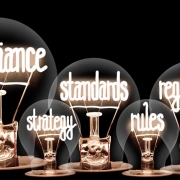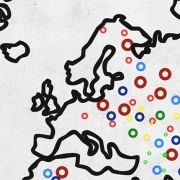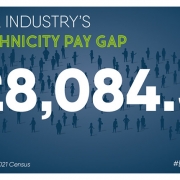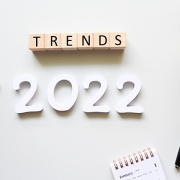Elliot Ross, Email Evangelist, Taxi for Email (a SparkPost company), discusses the foundation of a successful email campaign, and it all starts with your messaging.
How’s your inbox looking? If you are anything like me you receive dozens of emails every day, a good chunk of which you don’t have the time or the inclination to open, let alone read.
The question of how to get your branded email messages opened has been focusing the minds of marketing managers for well over two decades now. As the number of emails people receive has increased, so marketers have been forced to adopt ever more cunning ways of securing an opening. But why is it that we read some emails and consign others to the junk folder?
In spite of what some gurus claim there is no magic formula to getting your brand’s emails opened. There are however some golden rules to follow which will maximise your email’s chances of success and set you on the path to becoming an expert at creating the right branding and messaging for your emails.
Begin with a strategy rooted in your brand’s values
Before you even think about sending your first branded emails you need to ask yourself a few questions. Why am I sending emails as opposed to engaging on other platforms? What am I hoping to achieve? And most important of all, what does success look like?
There are five key things to consider when you are setting out your strategy:
1. What are your email goals? Think about what you want to achieve from the emails you are sending and whether email really is the right channel to help you reach that goal.
2. Who is your audience – your subscribers? What email clients do they use? What’s the support for these devices/web clients?
3. What is the one thing you want your reader to do after opening your email? This is another key place to ask yourself if email is the right channel to use?
Think about the timing of your email send. Don’t just guess when the best time to send your email will be. Look back at previous send data and make a decision informed by this previous data. 5. Outline success measures before you start. Tracking things like downloads, clicks, opens, and revenue is great, but consider setting up A/B testing for different copy or segments.
By detailing the above into an overarching strategy before you start sending your emails, you can make creative emails whilst not going off-track with the email’s overall purpose – keeping you emails in sync and recognisable to subscribers.
What kind of language are you going to use?
The most important factor when writing copy for the email is that the wording should be authentic and reflect your brand. If you work for a B2B company whose target is senior executives write in an appropriate way for that audience. Authenticity is essential for building trust and ensuring that people know that what you are saying is legitimate.
Being able to personalise email content could also help build up authenticity and trust. Is there a way you can address an individual that takes into consideration the data you already have on them? Optimising your email by making it relevant to specific audience groups will also help. Think about geographical regions, types of customers, customer preferences, etc. That way you can deliver relevant messages to either audience as opposed to one blanket email.
Remember what your email’s primary role is too. Do you want it to be informative and supportive in building a relationship between you and your customer or are you more focussed on seeking instant clicks through to your website?
The winning formula for effective email design
Creating an email strategy also encompasses working on design guidelines. These are not just helpful for designers, but anyone involved in the email process. Guidelines can be a huge time-saver and enable you to produce high-quality emails without spending too much time going back and forth with your designer. You will need to consider ideas around fonts, colours, spacing and dimensions to keep your emails recognisable with your readers.
Ultimately the two key principles of email design are:
· Create something that is both beautiful and functional that will entice your recipients into reading to the end.
· Create a design that reflects your existing brand values, which are then consistent across every communication you send.
The answer? Use an email design system (EDS), where you can set up structured templates that empower your designers creatively, but at the same time enable them to work quickly and efficiently within set boundaries.
Once the structure is agreed you can work on the design elements and start to bring in other elements of your brand, such as bespoke imagery or illustrations, GIFs and embedded videos.
Consistency is king and the importance of branding
No matter who is making and sending your branded emails, they should always be consistent, even if you work with dispersed teams who are responsible for creating emails for different products or services.
Unless it is the first email you have sent, it won’t be seen by your reader in isolation. They will have seen and interacted with your branding on other platforms, so in order to strengthen your brands perception, your email design needs to be consistent with these.
Creating a library of assets your team can use to speed up email creation whilst adhering to consistency will help. If you have a core EDS for all parts of the business, updating brand assets will be much more manageable and spotting anomalies will be far easier. You could also look into building a set of sub-templates for each product or service within the brand, with altered footers, contact details and logos, so anyone creating an email will have the elements they need to create something aligned with the brand.
Navigating the minefield that is dark mode and accessibility, and how to get it right
One of the biggest challenges for email designers is to create striking emails that also work in dark mode – the extension that helps you quickly turn the screen (browser) to dark at night-time.
To ensure your emails adapt to recipients using dark mode, you may want to consider using transparent PNGs and add a white outline around elements in your EDS. You will want to think about designing your default images for dark mode, such as social icons, logos, link colours etc. and how they’re going to contrast with the dark background.
You will need to think about accessibility too. Smaller text and thin fonts might enable you to pack more into your email, but if short-sighted readers can’t see what you have written then you have wasted your time. It is also imperative to avoid walls of text. If the copy looks too cluttered, try to split it into a few paragraphs.
Summary
Preparation, strategy and messaging are everything to an email marketer – giving customers a consistent experience regardless of where they see your brand. And if you can construct creative, yet stringent guidelines you will save yourself and your design team so much time.
Email isn’t a website, but it is a good opportunity to replicate key website aspects such as navigation and CTA style. The chances are, if someone has seen your website you will be retargeting them at multiple touchpoints. And email needs to sit within the brand framework to offer users the consistency they would expect.
Find the right journalists, influencers and high-profile people in politics to target with your upcoming campaigns with the Vuelio Media Database – find out more and book a demo.






















